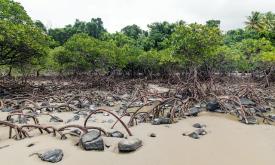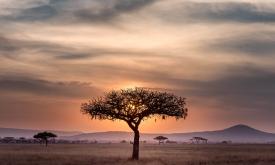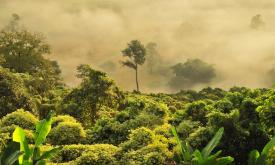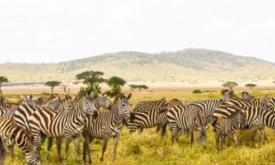How much do ecosystem services value and how much of this value is hold in protected areas? Though these questions are very difficult to answer, providing evidence of nature contribution to people and the role of protected areas as sources of values rather than sink is key in the process of conservation endorsement, particularly when monetary value is accounted for. In this report we present ecosystem services evaluation and mapping in Timor-Leste based on two approaches: global monetary value summaries and national experts evaluations. The analysis was conducted at national scale and protected site levels and reveals data gaps, important differences in the outcomes of the two approaches, and overall a very low protection of marine services.

RIS BLOG
@Antonio Vecoli
Please to know more about this hybrid event: https://eu-caribbean-marine-research.service-facility.eu/
The Caribbean is considered one of the most vulnerable regions in the world to the impacts of climate change, with coastal communities and low-lying areas being particularly exposed to the combined threats of sea level rise and extreme weather events.
Although Science, Technology and Innovation (STI) are key to increase climate resilience, and oceans are fundamental to achieve the Sustainable Development Goals (SDGs) in the region, investment in STI has been relatively low. There is a need to foster marine research within the region as well as to enhance its contribution to global knowledge production and to strengthen the science-policy-society interface.
The objective of the workshop is to gather multiple stakeholders in marine research to discuss on the potentialities, needs and gaps in marine research cooperation for the Caribbean region. Emphasis will be laid on the marine research topics: Coastal resilience, fisheries management, marine protected areas, ecosystems and biodiversity, ocean observation, research infrastructures.
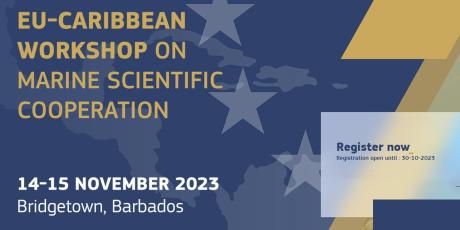
Conservation activities entail many relationships between environmental non-governmental organizations and donors, governments and private sectors, practitioners and local people resulting in what Sundberg (2006) called ‘conservation encounters’ – complex interactions that encompass encounters between the global and local, different cultural and social systems, human and non-human species, powers and ownerships. https://storymaps.arcgis.com/stories/37d984fa79ca44719c6a8f4bd0aa97b6
Since the Conference on Environment and Development in Rio de Janeiro in 1992, participatory approach to natural resources management has increasingly been recommended and recognised internationally as necessary for improving project goals and their sustainability. In particularly, the contribution of Indigenous People and Local communities (IPLCs) to effective conservation strategies has gained recognition. Several studies have demonstrated that conservation strategies and natural resources management supporting an equitable approach for both people and nature, achieve positive both social and ecological outcomes and contribute to effective long-term conservation of biodiversity
Marine Protected and Conserved Areas are a cornerstone for conservation of natural and cultural heritage. They provide ecosystem services that are critical for human health and local livelihoods and they are one the major tools to reach biodiversity conservation goals
Marine Protected Areas are fundamental not only to ensure conservation strategies but also to ensure the conservation and protection of traditional culture and the rights of local and indigenous people. The ocean includes marine resources that people use for subsistence, medicinal, and other purposes. They also include intangible cultural resources of spiritual, religious, and historic importance. According to the World Protected Areas Database, over the last years the number of MPAs are increasing quickly. However, it is not enough to ensure biodiversity conservation unless MPAs are properly managed and governed; an inclusive governance plays an important role in delivering social and ecological benefits
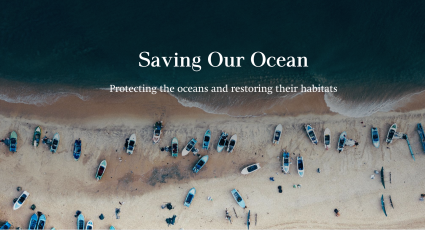
Data and information on biodiversity state and trends are fundamental to monitor conservation status of world’s ecosystems and to tackle the biodiversity crises we are facing. The availability and reliability of biodiversity data become, in the last decades, the strategic pillar to policy and decision-making process. There is a strong need for biodiversity data and information to better evaluate progress towards conservation goals and to tailor new evidence-based conservation strategies.
https://storymaps.arcgis.com/stories/2d17ee8c24c945eda4150c261f4d3941
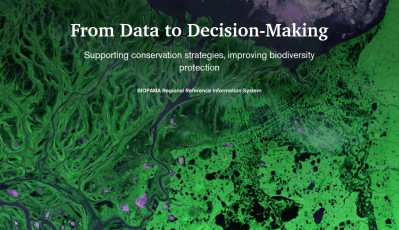
In the past few weeks, a new wind is blowing for protected and conserved areas management effectiveness in the islands of the Western Indian Ocean.
Marine Protected Area Managers discover IMET
Thanks to a collaboration between Varuna Biodiversité, RECOS, the Indian Ocean Commission (IOC), Western Indian Ocean Marine Protected Areas Professional Network (WIOPAN) of the Western Indian Ocean Marine Science Association (WIOMSA) and with the support of BIOPAMA, 40 participants were introduced to IMET on 29th- 30thMarch in Nosy Be island, Madagascar. Participants were from MPAs, government agencies, NGOs, biodiversity funds and support agencies from 7 countries and territories: Comoros, Réunion, Madagascar, Mauritius, Mayotte, Rodrigues and Seychelles. IMET coaches Domoina Rakotobe, Tiana Rahagalala and Arthur Tuda actively led the training which ended with strong interest in the tool. The next steps would be to use IMET in their own institution, and to organize a session on management effectiveness at the first MPA managers network congress scheduled in October.
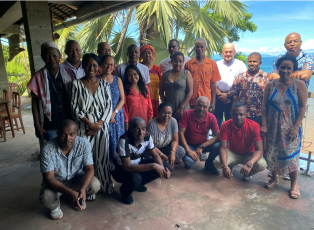
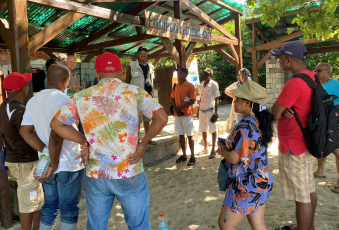
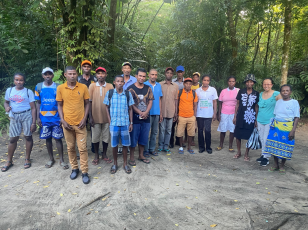
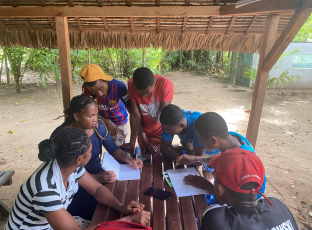
Change is the end result of all true learning
When I accessed the Regional Centre for Mapping Resources for Development headquarter in Kasarani, Nairobi, to attend the second edition of the Regional Resource Hub (RRH) Data Workshop on Protected and Conserved Areas for Eastern and Southern Africa, I could see the change has happened.
The banners, the reception gazebo, the big statues representing typical wildlife, the large tents hosting the buffets, the large plenary sessions room ready to host more than 70 people from all countries of Eastern and Southern Africa, were all good signs of that.
The Regional Resource Hub was created as one of the regional observatories for biodiversity and protected areas under the Biodiversity and Protected Areas Management (BIOPAMA) programme. The only two years old Regional Resource Hub for Eastern and Southern Africa had definitely grown up to an independent, standing alone secretariat run by a competent, enthusiastic and close-nit team of Kenyans: Ngugi Kimani, Eric Wabwile, Isaac Fadamullah, Yvonne Khaemba and Job Wangi.
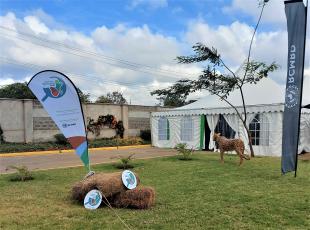
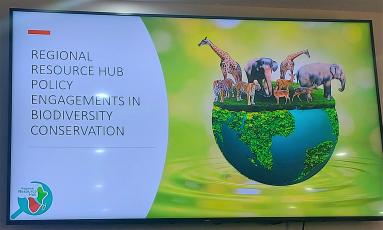
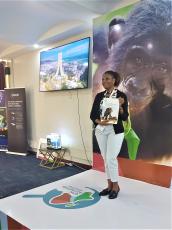
In 2021, the Ivorian Office of Parks and Reserves (OIPR), the Liberian Forest Department Authority (FDA) and the German cooperation agency GIZ evaluated the three parks: Tai, Grebo-Khran and Sapo with the Integrated Management Effectiveness Tool (IMET) . The overall objective was to identify strengths and weaknesses of management. In each park, a dozen of participants from staff, local stakeholders and partners spent four days to look at all aspects of park management taking into account the local context and history of each park.
Thanks to IMET scaling-up function, they were able to compare and carried out more in-depth analysis among the three parks.
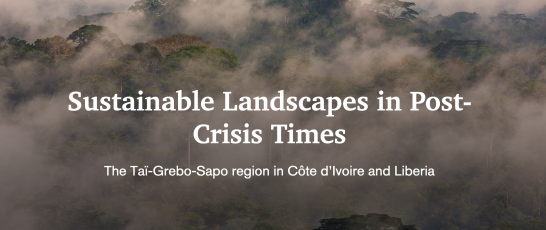
The validation workshop of the observatory for biodiversity and protected areas in West Africa has been held in Dakar on 14-17 March. The event was a fundamental step for the official recognition of the West Africa regional observatory.
The West Africa Economic and Monetary Union (Waemu) convened representatives of the 16 countries of the region to discuss about the results of the first 2 years of implementation of the West Africa Observatory for Protected Areas and biodiversity (OBAPAO) and the way forward.
Biodiversity and protected areas experts of west African countries beneficiary of the BIOPAMA, PAPBIO and PAPFOR programs, Technical Director and the Experts of the CSE, Regional Director and IUCN BIOPAMA expert, Representative of the Delegation of the European Union to Senegal, Experts from the Joint Research Centre of the European Commission, Expert from the VITO Design Office, ECOWAS Expert, Regional Coordinators of the PAPBIO and PAPFOR programs and Representative and experts from the UEMOA Commission met in presence for a review and validation workshop for progress carried out as part of the establishment and operationalization of the Observatory

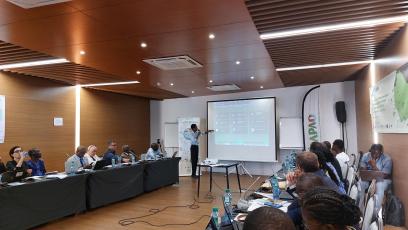
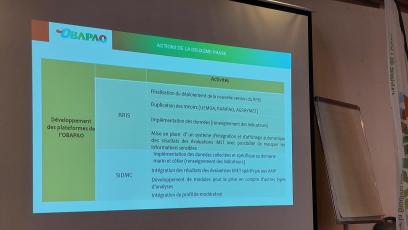
Protected and Conserved Areas are a cornerstone for conservation of natural and cultural heritage. They provide ecosystem services that are critical for human health and local livelihoods and they are one the major tools to reach biodiversity conservation goals. The increase in areas under protection is a great result. It is not enough to ensure biodiversity conservation unless PAs are properly managed and governed.
Many studies suggest that inclusive governance plays an important role in delivering social and ecological benefits. The International Union for Conservation of Nature (IUCN) recognizes four protected area governance types: Governance by government; Shared governance; Private governance and Governance by indigenous peoples and local communities with respect to who holds decision-making and management authority and responsibility about protected areas.
Differences among protected area governance types matter for conservation outcomes. We analysed the change in mangrove forests cover among different types of protected areas governance. We used the dataset for mangrove forests cover provided by Bunting et al. (2022) to estimate the effort to protect mangrove forest by ACP countries and the rate of loss within protected areas grouped by governance and countries between 2007-2020.


